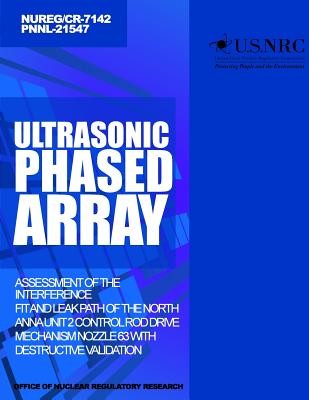
- We will send in 10–14 business days.
- Author: U S Nuclear Regulatory Commission
- Publisher: CreateSpace Independent Publishing Platform
- Year: 2014
- Pages: 138
- ISBN-10: 1499623100
- ISBN-13: 9781499623109
- Format: 21.6 x 28 x 0.8 cm, softcover
- Language: English
- SAVE -10% with code: EXTRA
Ultrasonic Phased Array Assessment of the Interference Fit and Leak Path of the North Anna Unit 2 Control Rod Drive Mechanism Nozzle 63 With Destructive Validation (e-book) (used book) | bookbook.eu
Reviews
Description
Research is being conducted for the U.S. Nuclear Regulatory Commission (NRC) at the Pacific Northwest National Laboratory (PNNL) to assess the effectiveness and reliability of advanced nondestructive examination (NDE) methods for the detection and characterization of flaws in nuclear power plant components. One area of concern relates to the nickel-based alloys used in primary pressure boundary components in pressurized water reactors (PWRs). Nickel-based alloys exposed to reactor coolant in PWRs may experience a form of degradation known as primary water stress corrosion cracking (PWSCC). One PWR component that has an operational history of PWSCC is the control rod drive mechanism (CRDM) nozzle. The CRDM nozzles are cylindrical penetrations in the upper reactor pressure vessel (RPV) head that allow for the insertion and removal of control rods. The penetration tube is held in place with an interference fit, and is seal-welded on the underside of the vessel head with a J-groove weld. Cracking in the nozzle or weld metal can allow borated water to leak to the top of the RPV head. Boric acid corrosion of the RPV head, as occurred at Davis Besse, is a concern, as is nozzle ejection in the presence of extensive circumferentially oriented cracking. In response to a number of observations of RPV head leakage at domestic plants, NRC regulations were modified to require PWR licensees to periodically perform a demonstrated surface or volumetric leak path assessment of all J-groove welds in the RPV head.
EXTRA 10 % discount with code: EXTRA
The promotion ends in 18d.18:00:38
The discount code is valid when purchasing from 10 €. Discounts do not stack.
- Author: U S Nuclear Regulatory Commission
- Publisher: CreateSpace Independent Publishing Platform
- Year: 2014
- Pages: 138
- ISBN-10: 1499623100
- ISBN-13: 9781499623109
- Format: 21.6 x 28 x 0.8 cm, softcover
- Language: English English
Research is being conducted for the U.S. Nuclear Regulatory Commission (NRC) at the Pacific Northwest National Laboratory (PNNL) to assess the effectiveness and reliability of advanced nondestructive examination (NDE) methods for the detection and characterization of flaws in nuclear power plant components. One area of concern relates to the nickel-based alloys used in primary pressure boundary components in pressurized water reactors (PWRs). Nickel-based alloys exposed to reactor coolant in PWRs may experience a form of degradation known as primary water stress corrosion cracking (PWSCC). One PWR component that has an operational history of PWSCC is the control rod drive mechanism (CRDM) nozzle. The CRDM nozzles are cylindrical penetrations in the upper reactor pressure vessel (RPV) head that allow for the insertion and removal of control rods. The penetration tube is held in place with an interference fit, and is seal-welded on the underside of the vessel head with a J-groove weld. Cracking in the nozzle or weld metal can allow borated water to leak to the top of the RPV head. Boric acid corrosion of the RPV head, as occurred at Davis Besse, is a concern, as is nozzle ejection in the presence of extensive circumferentially oriented cracking. In response to a number of observations of RPV head leakage at domestic plants, NRC regulations were modified to require PWR licensees to periodically perform a demonstrated surface or volumetric leak path assessment of all J-groove welds in the RPV head.


Reviews